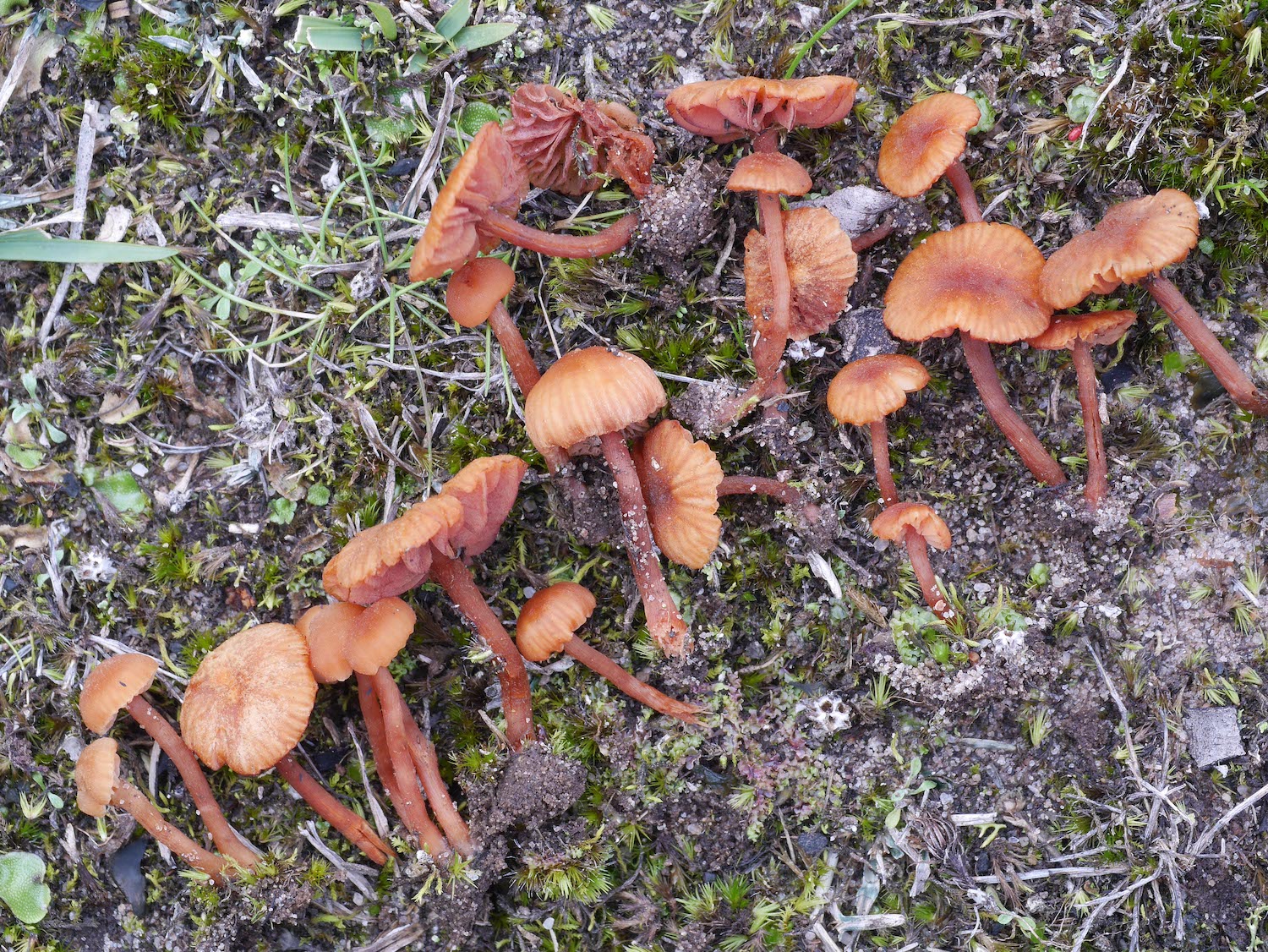

Laccaria sp. KIS6, PSC4456, TL2844
The genus Laccaria comprises about 80 species worldwide. Most are small to medium sized mushrooms with widely spaced pinkish-red to purplish gills but there are also truffle-like close relatives, currently placed in the genus Hydnangium. Nearly all species of Laccaria form ectomycorrhizal associations with trees, supplying the tree with minerals and water in return for products of photosynthesis. Laccaria sp. KIS6 was collected from under the large eucalypt known as Manna Gum, Eucalyptus viminalis, which is widely distributed in South-Eastern Australia across a large range of environments. PSC4456 and TL2844 are two collections made at the same time from the same mycelium and held respectively at herbaria AD and MEL. E. viminalis is a favoured food of the koala and is utilized in plantings in parks and in revegetation and is also used for plantation timber in Africa. The collection of Laccaria sp. KIS6 came from under trees of Eucalyptus viminalis subsp. cygnetensis planted at Rocky River in Flinders Chase National Park on Kangaroo Island in South Australia, and was made as part of a project investigating the transition from mushroom-like fungi to truffle-like fungi. Comparison of the genome of Laccaria sp. KIS6 with that of Hydnangium carneum is anticipated to help understand this transition toward a subterranean lifestyle which is believed to be an adaptation to a drying climate, a trait with economic potential in future forestry. Many species of Laccaria are difficult to distinguish on morphological characters but multiple gene regions, as generated through genome sequencing, will aid species delimitation and description of putatively novel taxa such as Laccaria sp. KIS6. We request that researchers wishing to publish analyses of this genome prior to its publication by the consortium to please email [email protected] and JGI for permission.
